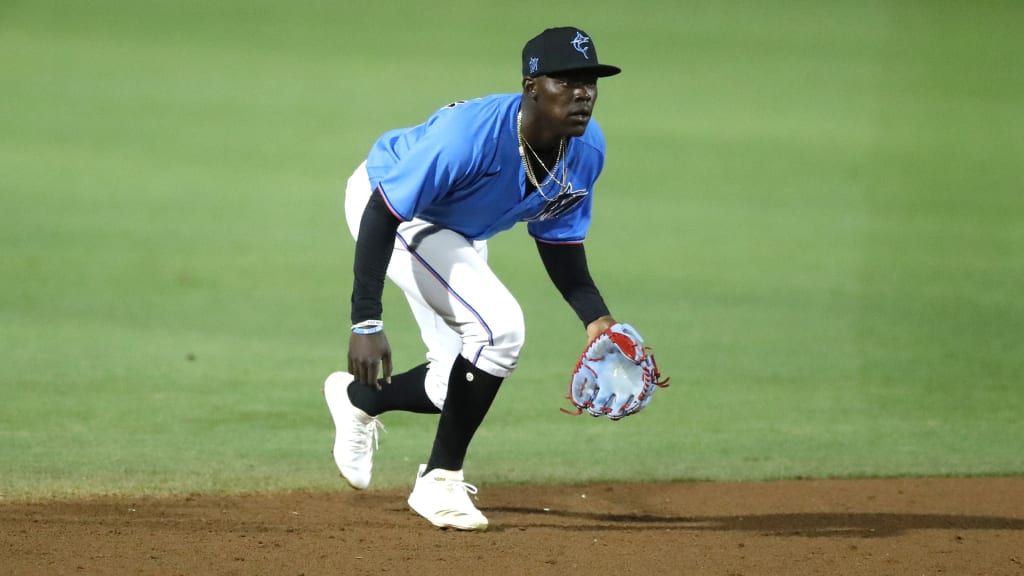
MIAMI -- A month may not show the whole picture, but it gave an encouraging snapshot of how the third year of the Marlins’ building process is going.
Before MLB canceled the final two weeks of Spring Training, and delayed the start of the regular season due to the national emergency created by the coronavirus pandemic, the Marlins were winding down one of their most successful camps in years.
Not just because the Marlins had a Grapefruit League record of 12-6-2, but because of the volume of talent -- from established veterans to prospects -- that was in camp. This was the deepest collection of talent the organization has had in camp in years.
Through trades, the MLB Draft, plus international and free-agent signings, the Marlins now have a foundation from the Minor League level up on to achieve sustainable big league success.
MLB.com looks at what we learned from the time pitchers and catchers began workouts at the Roger Dean Chevrolet Stadium complex in Jupiter, Fla., until MLB halted play on March 12.
The kids are alright
The primary reason for so much optimism is the fact that the prospects lived up to the hype, and people are noticing. MLB Pipeline recently ranked the Marlins’ farm system No. 4 in baseball. Each of the club’s top 11 ranked prospects was in camp, highlighted by outfielder JJ Bleday (No. 2), shortstop Jazz Chisholm (No. 3), outfielder Jesús Sánchez (No. 4), right-hander Edward Cabrera (No. 5), first baseman Lewin Díaz (No. 7), outfielder Monte Harrison (No. 9) and Nick Neidert (No. 10).
Harrison and Neidert were still on the big league roster when Spring Training was shut down.
Top prospect, right-hander Sixto Sánchez, was on a more conservative throwing plan, and didn’t appear in any games. He is healthy, but the organization is still being careful with him because of his past history dealing with right elbow soreness.
Chisholm and Díaz each made strong impressions, as did Cabrera.
Of the group, Harrison and Neidert are the closest to being big league ready. And if they don’t make the club, they could be among the first callups.
Villar center of attention
Perhaps the boldest organizational move was to switch career infielder Jonathan Villar to center field. The decision became final shortly before Spring Training started, when manager Don Mattingly and president of baseball operations Michael Hill met with Villar to see if he would welcome the position change.
Villar, acquired from the Orioles in December, said yes. Foremost, the Marlins want Villar’s bat in the lineup, where he projects to lead off. A switch-hitter, he was starting to heat up at the end of camp. The switch-hitter is a threat with his legs and power. He hit two homers and stole four bases in the spring.
Still, can he play center field? Thus far, the Marlins like what they see in terms of Villar’s reads and reactions.
In his big league career, he has played just 13 games in the outfield, and last played center field in 2017 (six games).
Searching for relief
Had Spring Training continued as scheduled, the Marlins’ would have spent the final two weeks trying to sort out the bullpen. It remains the most unsettled area of the squad. Right-hander Ryne Stanek, who is being counted on to pitch in high-leverage innings, has low back stiffness. The break gives him more time to recover. And right-hander Jeff Brigham (right biceps strain) did not pitch in any spring games, and was going to open the season on the injured list.
Free-agent addition Brandon Kintzler projects to be the closer, and non-roster invitee Brad Boxberger has impressed, and is expected to make the club. Right-hander Yimi García is another veteran who will pitch in the back end. Josh A. Smith, another non-roster invitee, has impressed and is creating a tough decision for the organization to see if he will make the club.
Sterling Sharp, a Rule 5 Draft claim from the Nationals, also has looked good. If he doesn’t make the Opening Day roster, he will be returned to Washington.


